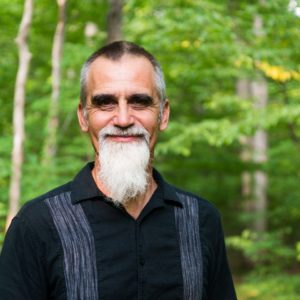 For more than a year, the Mennonite Spiritual Directors Network has been posting brief articles about spiritual direction – testimonies that witness to the potential of spiritual direction for encouraging and deepening spiritual growth.
For more than a year, the Mennonite Spiritual Directors Network has been posting brief articles about spiritual direction – testimonies that witness to the potential of spiritual direction for encouraging and deepening spiritual growth.
In addition to continuing articles about spiritual direction, the series will also include brief articles about spiritual practices that renew our faith and strengthen us for ministries of love – peacemaking, healing, compassion and service.
John Drescher-Lehman is a licensed clinical social worker in private practice, a spiritual director and a photographer. Along with his wife Sandy Drescher-Lehman, who is also a spiritual director and pastor, they are hosts at FernRock Retreat in Green Lane, Pennsylvania. Find John’s photos on Spotlight.
Many years ago I discovered that taking photographs was a way of praying.
When I photograph, I am attempting not just to look at the world, but to somehow look into the world: to see evidence of God’s presence, God’s moving among us, God’s breath moving over the land and through my being.
To do this I must be attentive, aware and present. But like any relationship, to be in it, I need to be both present to God, and also present to myself. I want to enter into God’s praying presence in this world. The photos I take are an attempt to join this praying presence.
Sight is one of the senses that helps me be attentive. Being attentive can be, and often is, prayer.
Almost three years ago, I decided to write a daily haiku as a practice of not only attention, but also reflection. Usually it is one of the last things I do before sleep — a way of noticing and reflecting on some part of my day that stands out.
Sometimes it is the beauty I noticed, the pain that stopped me, a change in the season, the presence of love and sometimes its absence.
Somehow the practice of expressing these experiences in three short lines brings me closer to the pure essence of this part of my day.
Last August, I began a daily practice of joining a photo to a haiku. Sometimes the process begins with a photo of what I noticed that day and births a haiku as a reflection on that photo. Sometimes an experience in the day becomes a haiku, and a photo gives it a visual place to live. Sometimes in the coming together of these two expressions, a deeper prayer emerges, beyond my intentions and desires — like a child that is born of two parents, yet separate and unique.
These are spiritual practices for me because they bring me into a deeper connection to my body and breath: the very place God called “good.” Once here, I notice I become open to Spirit, both within me and around me — Spirit that may minister to me in my pain, celebrate with me in my joy, and revel with me in the wonder that surrounds all.

